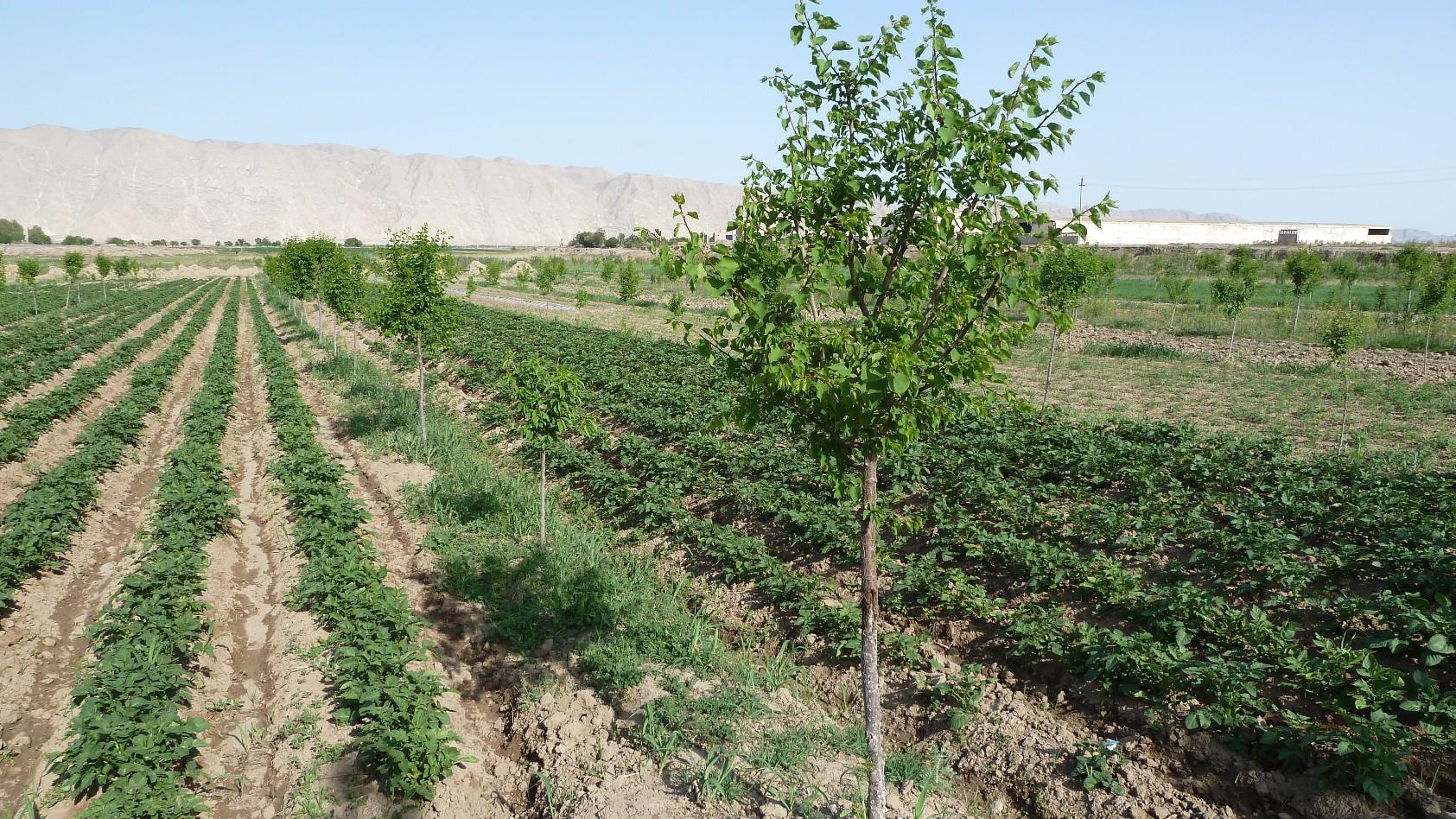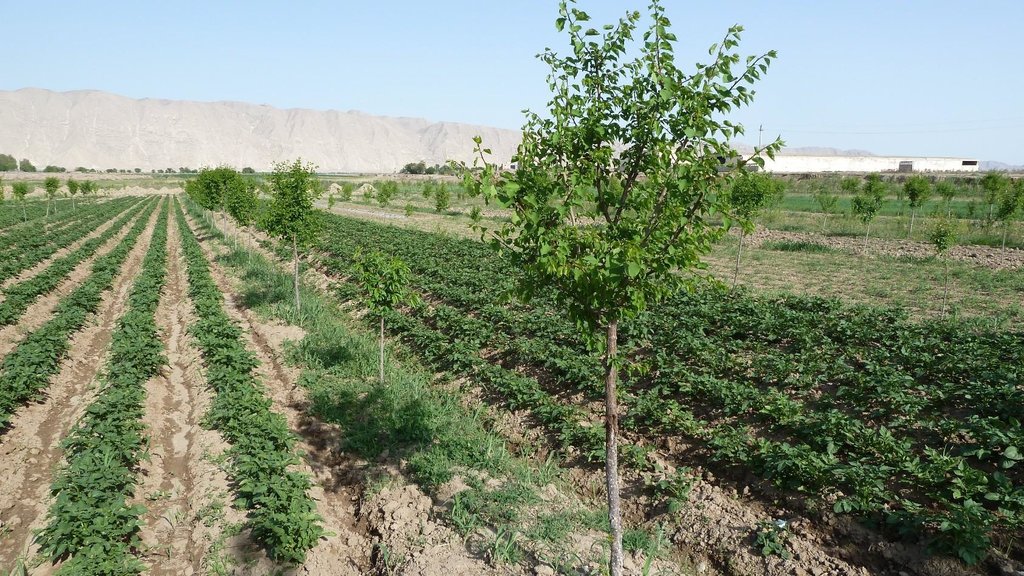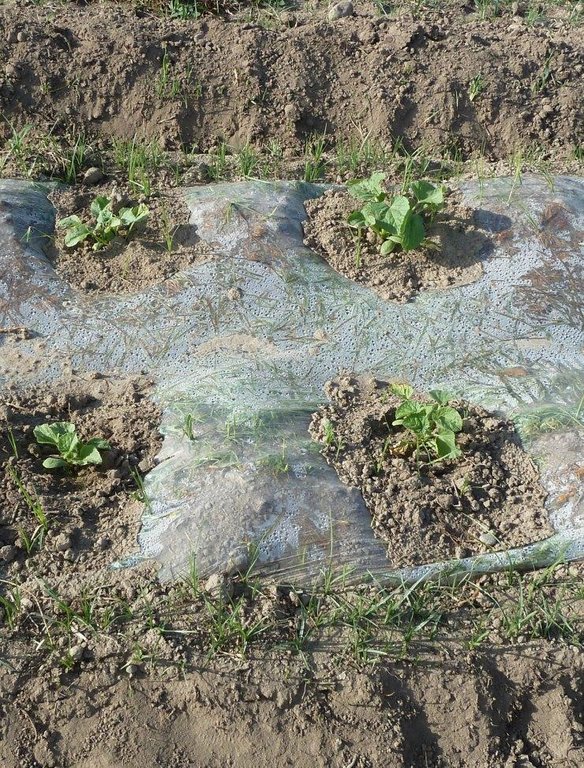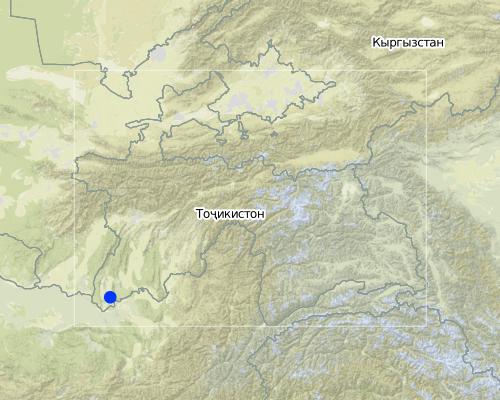Rehabilitation of poor soils through agroforestry [Tadjikistan]
- Création :
- Mise à jour :
- Compilateur : Natalia Mityakova
- Rédacteur : –
- Examinateur : David Streiff
Tajikistan - Central Asian Countries Initiative for Land Management (CACILM/ИСЦАУЗР)
technologies_1052 - Tadjikistan
- Résumé complet en PDF
- Résumé complet en PDF pour impression
- Résumé complet dans le navigateur
- Résumé complet (non formaté)
- Rehabilitation of poor soils through agroforestry: 15 mars 2017 (inactive)
- Rehabilitation of poor soils through agroforestry: 20 juillet 2017 (inactive)
- Rehabilitation of poor soils through agroforestry: 21 août 2019 (inactive)
- Rehabilitation of poor soils through agroforestry: 2 novembre 2021 (public)
Voir les sections
Développer tout Réduire tout1. Informations générales
1.2 Coordonnées des personnes-ressources et des institutions impliquées dans l'évaluation et la documentation de la Technologie
Spécialiste GDT:
Spécialiste GDT:
Spécialiste GDT:
Urakov Buran
buran.urakov@undp.org
UNDP
Tadjikistan
Nom du ou des institutions qui ont facilité la documentation/ l'évaluation de la Technologie (si pertinent)
United Nations Development Program (United Nations Development Program) - TadjikistanNom du ou des institutions qui ont facilité la documentation/ l'évaluation de la Technologie (si pertinent)
CDE Centre for Development and Environment (CDE Centre for Development and Environment) - SuisseNom du ou des institutions qui ont facilité la documentation/ l'évaluation de la Technologie (si pertinent)
Central Asian Countries Initiative for Sustainable Land Management - Multicountry Capacity Building (CACILM - MCB) - Kirghizistan1.3 Conditions relatives à l'utilisation par WOCAT des données documentées
Quand les données ont-elles été compilées (sur le terrain)?
13/04/2011
Le compilateur et la(les) personne(s) ressource(s) acceptent les conditions relatives à l'utilisation par WOCAT des données documentées:
Oui
2. Description de la Technologie de GDT
2.1 Courte description de la Technologie
Définition de la Technologie:
An agroforestry system with peach, plum, sweet cherry and persimmon trees was established on a plot of land, with poor soil quality.
2.2 Description détaillée de la Technologie
Description:
In the arid environment of Kabodion, large areas that had been irrigated during the Soviet times were abandoned after independence, and the irrigation facilities were neglected. Soils were highly degraded due to the long periods they had been without proper irrigation. On an area of poor quality soil, and previously abandoned plot of land covering about 6 ha, UNDP supported one family (Dehkan)to establish an agroforestry system by covering the costs of tree seedlings.
Purpose of the Technology: The aim of the technology was to improve agricultural production through a combination of measures such as improving soil fertility, increasing soil humidity through covering the soil with plastic sheets and preventing excess water drainage, and protection through a shelterbelt. Resilience to adverse climatic events is enhanced by increasing product diversification with a number of different tree, vegetable and crop species being planted.
Establishment / maintenance activities and inputs: First, the soil had to be washed to reduce the high salt content. Plum, peach, sweet cherry and persimmon tree seedlings were planted in lines with intercropping of potatoes, watermelon, beans and wheat inbetween. The seedlings were purchased from the Kabodion nursery. Labour was provided in the form of "hashar" or voluntary neighbourhood help. On the windward side of the field, a shelterbelt consisting of White Poplar (Populus alba) trees was established to protect the field from wind erosion, and to reduce evapotranspiration. In order to improve soil structure annual crop rotations were practiced. Every 4 years 40 tones of cow dung are spread out per ha of land. The application of organic manure constitutes an important cost factor for the farmer, as 40 tons of manure costs about 180 to 220 USD. To improve soil humidity and to enable early planting for watermelons, cultivation seeds are planted under a tight plastic film with irrigation water filled underneath the sheet. As soon as the seedlings emerge a hole is made in the plastic to create space for the plants. Irrigation is applied only sparingly to prevent the soil from a new rise in salinity. The plot is situated on a gentle slope which facilitated the establishment of a drainage system by digging a trench at the foot of the field to absorb excess water. The farmer was able to cover the costs of this initial investment himself using the revenues from the first harvest. At the foot of this field, salt tolerant Russian Silverberry (Elaeagnus angustifolia) trees were planted to promote biodrainage to help prepare the adjacent land for conversion to agroforestry at a later stage. The farmer gained the knowledge that was necessary for the establishment of the system through attending the farmer field schools (see approach TAJ018).
Natural / human environment: This technology is suitable for other arid environments, and the economic benefits are high compared to the establishment and maintenance costs. When this was realised by the neighbouring farmers they adopted the technology on an area of land that was actually three times larger.
2.3 Photos de la Technologie
2.5 Pays/ région/ lieux où la Technologie a été appliquée et qui sont couverts par cette évaluation
Pays:
Tadjikistan
Région/ Etat/ Province:
Khatlon, Kabodion
Autres spécifications du lieu:
Khudokulov Jamoat
Map
×2.6 Date de mise en œuvre de la Technologie
Si l'année précise est inconnue, indiquez la date approximative: :
- il y a moins de 10 ans (récemment)
2.7 Introduction de la Technologie
Spécifiez comment la Technologie a été introduite: :
- par le biais de projets/ d'interventions extérieures
3. Classification de la Technologie de GDT
3.1 Principal(aux) objectif(s) de la Technologie
- réduire, prévenir, restaurer les terres dégradées
3.2 Type(s) actuel(s) d'utilisation des terres, là où la Technologie est appliquée

Terres cultivées
- Cultures annuelles
- Plantations d’arbres ou de buissons
Principales cultures (vivrières et commerciales):
major food crop: potatoes, wheat, beans, watermelons

Mixte (cultures/ pâturages/ arbres), incluant l'agroforesterie
- Agroforesterie
Principaux produits/ services:
major food crop: plum, peach, sweet cherries, persimmons
Commentaires:
Major land use problems (compiler’s opinion): degradation of vegetation cover, loss of topsoil through wind erosion, poor access to irrigation water,
Major land use problems (land users’ perception): salinity, waterlogging, low soil fertility, low agricultural production
Future (final) land use (after implementation of SLM Technology): Mixed: Mf: Agroforestry
Si l'utilisation des terres a changé en raison de la mise en œuvre de la Technologie, indiquez l'utilisation des terres avant la mise en œuvre de la Technologie:
Other: Oo: Other: wastelands, deserts, glaciers, swamps, recreation areas, etc
3.3 Informations complémentaires sur l'utilisation des terres
Approvisionnement en eau des terres sur lesquelles est appliquée la Technologie:
- pleine irrigation
Nombre de période de croissance par an: :
- 2
Précisez:
Longest growing period in days: 240Longest growing period from month to month: October - May (winter wheat)Second longest growing period in days: 120Second longest growing period from month to month: June-September
3.4 Groupe de GDT auquel appartient la Technologie
- agroforesterie
- Amélioration de la couverture végétale/ du sol
- amélioration des variétés végétales, des races animales
3.5 Diffusion de la Technologie
Spécifiez la diffusion de la Technologie:
- appliquée en des points spécifiques ou concentrée sur une petite surface
Commentaires:
Total area covered by the SLM Technology is 0.06 m2.
The technology was initially applied on 5.8 ha of denuded land, however, it has been spontaneously adopted by a neighbour who has about 18 ha.
3.6 Mesures de GDT constituant la Technologie

pratiques agronomiques
- A1: Couverture végétale/ du sol
- A2: Matière organique/ fertilité du sol
- A3: Traitement de la couche superficielle du sol

pratiques végétales
- V1: Couverture d’arbres et d’arbustes

structures physiques
- S3: Fossés étagés, canaux, voies d'eau
Commentaires:
Main measures: agronomic measures, vegetative measures
Secondary measures: structural measures
Type of agronomic measures: manure / compost / residues, rotations / fallows, furrows (drainage, irrigation)
Type of vegetative measures: aligned: -along boundary, aligned: -linear
3.7 Principaux types de dégradation des terres traités par la Technologie

érosion éolienne des sols
- Et: perte de la couche superficielle des sols (couche arable)

dégradation chimique des sols
- Cn: baisse de la fertilité des sols et réduction du niveau de matière organique (non causée par l’érosion)
- Cs: salinisation/ alcalinisation

dégradation physique des sols
- Pw: saturation en eau des sols

dégradation biologique
- Bc: réduction de la couverture végétale
- Bs: baisse de la qualité et de la composition/ diversité des espèces

dégradation hydrique
- Ha: aridification
Commentaires:
Main type of degradation addressed: Cn: fertility decline and reduced organic matter content, Cs: salinisation / alkalinisation, Pw: waterlogging, Ha: aridification
Secondary types of degradation addressed: Et: loss of topsoil, Bc: reduction of vegetation cover, Bs: quality and species composition /diversity decline
Main causes of degradation: soil management (soils were under irrigation for a long time and had salinity problems), droughts, inputs and infrastructure: (roads, markets, distribution of water points, other, …) (breakdown of irrigation facilities), education, access to knowledge and support services (lack of knowledge about agroforestry), governance / institutional (no freedom to farm)
3.8 Prévention, réduction de la dégradation ou réhabilitation des terres dégradées
Spécifiez l'objectif de la Technologie au regard de la dégradation des terres:
- restaurer/ réhabiliter des terres sévèrement dégradées
Commentaires:
Main goals: rehabilitation / reclamation of denuded land
4. Spécifications techniques, activités, intrants et coûts de mise en œuvre
4.2 Spécification/ explications techniques du dessin technique
Technical knowledge required for field staff / advisors: moderate
Technical knowledge required for land users: moderate
Main technical functions: control of concentrated runoff: drain / divert, improvement of ground cover, increase in organic matter, increase in nutrient availability (supply, recycling,…), increase of infiltration, reduction in wind speed
Secondary technical functions: increase of biomass (quantity), promotion of vegetation species and varieties (quality, eg palatable fodder)
Manure / compost / residues
Material/ species: organic manure
Quantity/ density: 40 tones
Remarks: ha
Rotations / fallows
Material/ species: annual crop rotation
Furrows (drainage, irrigation)
Material/ species: drainage
Aligned: -along boundary
Vegetative material: T : trees / shrubs
Aligned: -linear
Vegetative material: F : fruit trees / shrubs
Number of plants per (ha): 845
Spacing between rows / strips / blocks (m): 10
Vertical interval within rows / strips / blocks (m): 3
Trees/ shrubs species: Elaeagnus angustifolia (for shelterbelt and fence around plot)
Fruit trees / shrubs species: Diospyros kaki, Prunus avium, Prunus persica, Prunus domestica
Diversion ditch/ drainage
Depth of ditches/pits/dams (m): 1.5
Width of ditches/pits/dams (m): 1
Length of ditches/pits/dams (m): 200
4.3 Informations générales sur le calcul des intrants et des coûts
autre/ monnaie nationale (précisez):
SOM
Indiquer le taux de change du dollars en monnaie locale (si pertinent): 1 USD= :
4,5
Indiquez le coût salarial moyen de la main d'œuvre par jour:
20.00
4.4 Activités de mise en place/ d'établissement
| Activité | Type de mesures | Calendrier | |
|---|---|---|---|
| 1. | Planting of tree seedlings in field and along boundary | Végétale | early spring |
| 2. | Digging up irrigation ditch at the foot of the field | Structurel |
4.5 Coûts et intrants nécessaires à la mise en place
| Spécifiez les intrants | Unité | Quantité | Coûts par unité | Coût total par intrant | % des coût supporté par les exploitants des terres | |
|---|---|---|---|---|---|---|
| Main d'œuvre | Planting of tree seedlings | Persons/day | 50,0 | 20,0 | 1000,0 | 100,0 |
| Main d'œuvre | Digging up irrigation ditch | Persons/day | 40,0 | 20,0 | 800,0 | 100,0 |
| Equipements | Machine use | ha | 1,0 | 274,0 | 274,0 | |
| Equipements | 1,0 | |||||
| Matériel végétal | Tree seedlings | pieces | 844,0 | 3,14573 | 2655,0 | |
| Coût total de mise en place de la Technologie | 4729,0 | |||||
4.6 Activités d'entretien/ récurrentes
| Activité | Type de mesures | Calendrier/ fréquence | |
|---|---|---|---|
| 1. | Annual crop rotation | Agronomique | |
| 2. | Application of organic manure | Agronomique | every 4 years |
| 3. | Cover soil around crops with plastic cover | Agronomique | early planting season |
| 4. | Tillage | Agronomique | |
| 5. | Continuous daily irrigation for tree seedlings | Végétale | daily during hot months |
4.7 Coûts et intrants nécessaires aux activités d'entretien/ récurrentes (par an)
| Spécifiez les intrants | Unité | Quantité | Coûts par unité | Coût total par intrant | % des coût supporté par les exploitants des terres | |
|---|---|---|---|---|---|---|
| Main d'œuvre | Daily irrigation for tree seedlings | Persons/day | 186,0 | 20,0 | 3720,0 | 100,0 |
| Engrais et biocides | Organic/manure | tons | 40,0 | 25,0 | 1000,0 | |
| Matériaux de construction | Plastic cover | m | 1,0 | 1,8 | 1,8 | 100,0 |
| Autre | Tillage | ha | 1,0 | 430,0 | 430,0 | |
| Coût total d'entretien de la Technologie | 5151,8 | |||||
Commentaires:
Costs were calculated per ha. Labour costs for irrigation of tree seedlings were calculated assuming that one person has to irrigate daily during 6 months of the year and were included under annual recurring costs.
4.8 Facteurs les plus importants affectant les coûts
Décrivez les facteurs les plus importants affectant les coûts :
The cost of the tree seedlings is the most determinate factor. Labour costs are high if labour has to be paid, however, in this case labour is provided free by the farmer.
5. Environnement naturel et humain
5.1 Climat
Précipitations annuelles
- < 250 mm
- 251-500 mm
- 501-750 mm
- 751-1000 mm
- 1001-1500 mm
- 1501-2000 mm
- 2001-3000 mm
- 3001-4000 mm
- > 4000 mm
Spécifiez la pluviométrie moyenne annuelle (si connue), en mm:
100,00
Zone agro-climatique
- aride
Thermal climate class: temperate
5.2 Topographie
Pentes moyennes:
- plat (0-2 %)
- faible (3-5%)
- modéré (6-10%)
- onduleux (11-15%)
- vallonné (16-30%)
- raide (31-60%)
- très raide (>60%)
Reliefs:
- plateaux/ plaines
- crêtes
- flancs/ pentes de montagne
- flancs/ pentes de colline
- piémonts/ glacis (bas de pente)
- fonds de vallée/bas-fonds
Zones altitudinales:
- 0-100 m
- 101-500 m
- 501-1000 m
- 1001-1500 m
- 1501-2000 m
- 2001-2500 m
- 2501-3000 m
- 3001-4000 m
- > 4000 m
5.3 Sols
Profondeur moyenne du sol:
- très superficiel (0-20 cm)
- superficiel (21-50 cm)
- modérément profond (51-80 cm)
- profond (81-120 cm)
- très profond (>120 cm)
Texture du sol (de la couche arable):
- grossier/ léger (sablonneux)
Matière organique de la couche arable:
- faible (<1%)
Si disponible, joignez une description complète du sol ou précisez les informations disponibles, par ex., type de sol, pH/ acidité du sol, capacité d'échange cationique, azote, salinité, etc.
Soil fertility is low
Soil drainage / infiltration is poor: water logging occurs
Soil water storage capacity is low
5.4 Disponibilité et qualité de l'eau
Profondeur estimée de l’eau dans le sol:
< 5 m
Disponibilité de l’eau de surface:
faible/ absente
Qualité de l’eau (non traitée):
uniquement pour usage agricole (irrigation)
Commentaires et précisions supplémentaires sur la qualité et la quantité d'eau:
Ground water table: Too high, danger of waterlogging
5.5 Biodiversité
Diversité des espèces:
- faible
5.6 Caractéristiques des exploitants des terres appliquant la Technologie
Orientation du système de production:
- mixte (de subsistance/ commercial)
Revenus hors exploitation:
- moins de 10% de tous les revenus
Individus ou groupes:
- individu/ ménage
Niveau de mécanisation:
- travail manuel
- mécanisé/ motorisé
Indiquez toute autre caractéristique pertinente des exploitants des terres:
Land users applying the Technology are mainly common / average land users
Population density: 50-100 persons/km2
Annual population growth: 2% - 3%
Level of mechanization: Land cultivation is a mixture of mechanisation and manual labour
5.7 Superficie moyenne des terres détenues ou louées par les exploitants appliquant la Technologie
- < 0,5 ha
- 0,5-1 ha
- 1-2 ha
- 2-5 ha
- 5-15 ha
- 15-50 ha
- 50-100 ha
- 100-500 ha
- 500-1 000 ha
- 1 000-10 000 ha
- > 10 000 ha
Cette superficie est-elle considérée comme de petite, moyenne ou grande dimension (en se référant au contexte local)?
- moyenne dimension
Commentaires:
6 ha
5.8 Propriété foncière, droits d’utilisation des terres et de l'eau
Propriété foncière:
- état
Droits d’utilisation des terres:
- individuel
Commentaires:
family Dehkan farm
5.9 Accès aux services et aux infrastructures
santé:
- pauvre
- modéré
- bonne
éducation:
- pauvre
- modéré
- bonne
assistance technique:
- pauvre
- modéré
- bonne
emploi (par ex. hors exploitation):
- pauvre
- modéré
- bonne
marchés:
- pauvre
- modéré
- bonne
énergie:
- pauvre
- modéré
- bonne
routes et transports:
- pauvre
- modéré
- bonne
eau potable et assainissement:
- pauvre
- modéré
- bonne
services financiers:
- pauvre
- modéré
- bonne
6. Impacts et conclusions
6.1 Impacts sur site que la Technologie a montrés
Impacts socio-économiques
Production
production agricole
production fourragère
Commentaires/ spécifiez:
lucerne (alfalfa) production
risque d'échec de la production
Commentaires/ spécifiez:
diversification
diversité des produits
surface de production
Commentaires/ spécifiez:
before the land was denuded
Impacts socioculturels
sécurité alimentaire/ autosuffisance
situation sanitaire
Commentaires/ spécifiez:
vitamin-rich fruits are more readily available
connaissances sur la GDT/ dégradation des terres
Commentaires/ spécifiez:
through participation in farmer field schools
apaisement des conflits
Commentaires/ spécifiez:
jealousy by other land users who would like to cultivate this land now they can see how productive it is
Livelihood and human well-being
Commentaires/ spécifiez:
Farmer does not need to migrate to Russia anymore to find work, and could afford to buy a house.
Impacts écologiques
Cycle de l'eau/ ruissellement
drainage de l'excès d'eau
évaporation
Sols
humidité du sol
couverture du sol
compaction du sol
cycle/ recharge des éléments nutritifs
salinité
matière organique du sol/ au dessous du sol C
Biodiversité: végétale, animale
biomasse/ au dessus du sol C
diversité végétale
Réduction des risques de catastrophe et des risques climatiques
vitesse du vent
6.3 Exposition et sensibilité de la Technologie aux changements progressifs et aux évènements extrêmes/catastrophes liés au climat (telles que perçues par les exploitants des terres)
Changements climatiques progressifs
Changements climatiques progressifs
| Saison | Type de changements/ extrêmes climatiques | Comment la Technologie fait-elle face à cela? | |
|---|---|---|---|
| températures annuelles | augmente | bien |
Extrêmes climatiques (catastrophes)
Catastrophes météorologiques
| Comment la Technologie fait-elle face à cela? | |
|---|---|
| pluie torrentielle locale | bien |
| tempête de vent locale | bien |
Catastrophes climatiques
| Comment la Technologie fait-elle face à cela? | |
|---|---|
| sécheresse | pas bien |
Catastrophes hydrologiques
| Comment la Technologie fait-elle face à cela? | |
|---|---|
| inondation générale (rivière) | pas bien |
Autres conséquences liées au climat
Autres conséquences liées au climat
| Comment la Technologie fait-elle face à cela? | |
|---|---|
| réduction de la période de croissance | bien |
6.4 Analyse coûts-bénéfices
Quels sont les bénéfices comparativement aux coûts de mise en place (du point de vue des exploitants des terres)?
Rentabilité à court terme:
très positive
Rentabilité à long terme:
très positive
Quels sont les bénéfices comparativement aux coûts d'entretien récurrents (du point de vue des exploitants des terres)?
Rentabilité à court terme:
très positive
Rentabilité à long terme:
très positive
Commentaires:
In the beginning the farmer was not sure about the short-term benefits, but he confirmed that even after just two years he received eight times more than what he invested initially.
6.5 Adoption de la Technologie
- cas isolés/ expérimentaux
Si disponible, quantifiez (nombre de ménages et/ou superficie couverte):
1 household
Parmi tous ceux qui ont adopté la Technologie, combien d'entre eux l'ont fait spontanément, à savoir sans recevoir aucune incitation matérielle ou aucun paiement?
- 10-50%
Commentaires:
100% of land user families have adopted the Technology with external material support
1 land user families have adopted the Technology with external material support
There is a strong trend towards spontaneous adoption of the Technology
Comments on adoption trend: Already 10 other farmers who noticed the success of this plot, have adopted this technology themselves.
Neighbour applied technologie spontaenously.
6.7 Points forts/ avantages/ possibilités de la Technologie
| Points forts/ avantages/ possibilités du point de vue de l'exploitant des terres |
|---|
| Improved livelihood as revenues are greater than those gained as a seasonal worker in Russia and enough capital produced to buy own house |
| Feeling confident about the future |
|
Improved yields How can they be sustained / enhanced? continue with application of organic manure, soil cover with plastic sheets, crop rotation, integrated pest management etc. |
| Points forts/ avantages/ possibilités du point de vue du compilateur ou d'une autre personne ressource clé |
|---|
|
Greatly increased income opportunity in an arid environment How can they be sustained / enhanced? disseminate knowledge to other farmers in the region |
| Diversified system and therefore reduced risk of production failure |
6.8 Faiblesses/ inconvénients/ risques de la Technologie et moyens de les surmonter
| Faiblesses/ inconvénients/ risques du point de vue de l’exploitant des terres | Comment peuvent-ils être surmontés? |
|---|---|
| increased conflicts as land users who used to cultivate this land before and gave up would now like to have the land back. |
Liens et modules
Développer tout Réduire toutLiens
Aucun lien
Modules
Aucun module trouvé





